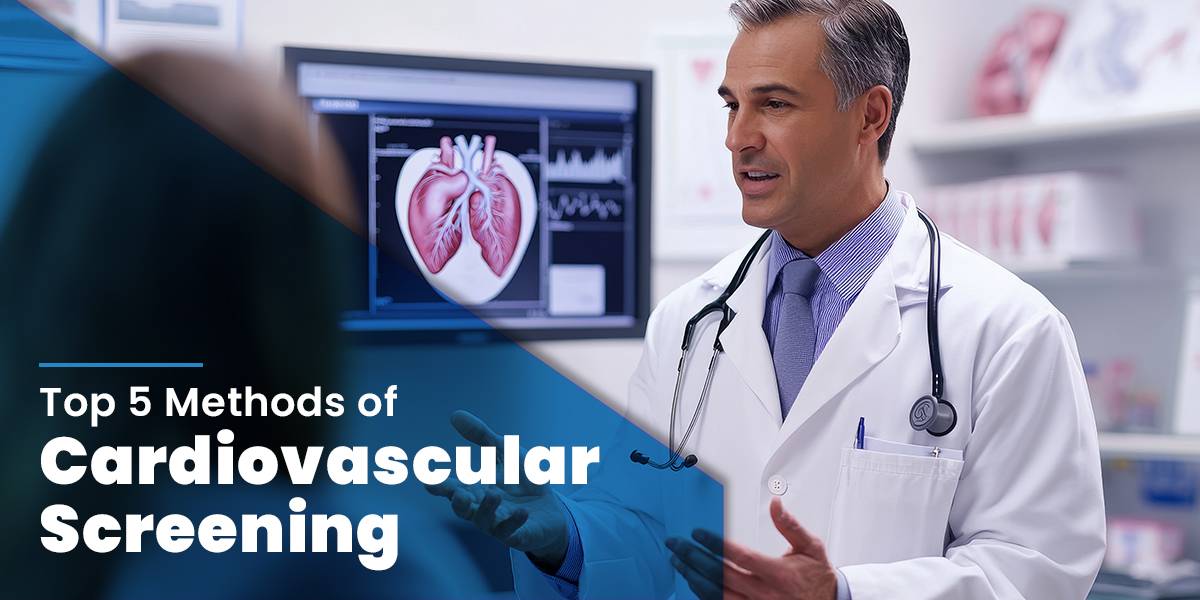Heart issues come ‘silently’ as they do not present prior symptoms. Until a major event appears, it is often impossible to predict the risks that one may face. However, it is a very common problem for people to choose the right heart heath test for themselves. This blog discusses some common diagnostic tests that a healthcare specialist incorporates while assessing the heart health. These can help a lot to determine the existing risk factors towards a stroke or heart attack.
What tests does a heart health check comprise of?
A timely cardiovascular screening helps to ward off potential heart issues. It typically consists of the following tests:
Basic parameter check
These are simple and rapid procedures to detect preliminary stages of heart problems. Moreover, these consist of primary tests that check:
· Blood pressure: The healthcare provider monitors BP with the help of sphygmomanometer and tells whether it is normal or not. A high BP often presents an increased risk of cardiovascular issues in the long term. In medical terms it is known as ‘hypertension’. Additionally, it helps to identify arterial blockages, less blood circulation and so on. A normal BP should ideally fall within the range of 120/80 mm Hg.
· Routine blood tests: These tests help to quantify the number of red and white blood cells in blood. Moreover, it also checks glucose levels, lipid levels. Since these factors contribute a lot towards maintenance of heart health, routine blood tests are crucial. Apart from checking the above parameters, blood tests indicate protein and hormone levels, needed for optimal functioning of heart. Depending upon the results, the doctor may provide further tests.
Coronary imaging tests
These image tests help a lot to discover the internal abnormalities of heart. It helps the doctor to arrange for suitable treatment methods after making a thorough analysis. Common procedures include:
· Cardiac CT (computed tomography) scanning: A CT scan gives a detailed 3D image of the heart and its associated blood vessels. It helps to introspect arterial blockages that may lead to disruption of heart’s function in near future. Moreover, this can also detect pericarditis (inflammation of the protective membranes around the heart).
· Cardiac MRI scanning: MRI stands for magnetic resonance imaging. It uses electromagnetic waves to create high resolution images of the heart. These in turn assist the doctor to determine heart attacks, other valve-related problems, for example: aortic stenosis, cardiac tumours etc.
· Chest X-ray: A thoracic x-ray helps to collect signs related to heart failure and other associated problems. Additionally, it detects pulmonary issues that may hamper heart’s function. However, it does not capture images of the internal morphology of heart.
· Echocardiogram: An echocardiogram functions with the help of electrodes and sound waves. It generates pictures of the heartwhile in motion. This in turn assists the physician to assess the internal chambers of heart and valves.
· Myocardial perfusion scanning: It is also termed as ‘nuclear stress test’. The procedure involves insertion of a little amount of radioactive element, called as ‘tracer’. It travels into the heart through the bloodstream. Usually, the healthy heart muscles absorb the radioactive substance and become distinct than the other parts. Thus, when scanning is performed, the damaged areas (the not highlighted parts) are shown. Through this procedure, the doctor can determine how well blood is flowing through the arteries. It also helps detecting scarred tissue caused due to a heart attack.
Lessinvasive heart tests
Doctors may suggest additional tests in order to get detailed information about the current status of heart. Apart fromprimary examinations and imagingtests, there are certain invasive tests too. Some of the common procedures are:
· Cardiac catheterization: This procedure involves insertion of a narrow, elongated tube known as a ‘catheter’ into the arm. The doctor may also put it inside the neck or groin region, depending upon the requirement. Thereafter, angiography is or a less invasive procedure is performed. a provider inserts a thin, long tube called a catheter into your arm, groin, or neck and uses imaging to guide the catheter to your heart. Your provider conducts an angiogram or performs a minimally invasive procedure.
· Coronary angiography test: Coronary angiography is a procedure that uses a special type of dye to monitor blood flow. A cardiac catheter carries that dye up to the heart and x-ray monitors for any kind of blockage in the coronary arteries. Such arterial blockages reduce blood flow, thus causing heart issues. Upon severe problems, the doctor may suggest angioplasty.
Other non-invasive heart tests
Some other types of tests involved in a heart check are:
· Exercise stress test: Stress tests help to determine if the heart is pumping properly or not. This is basically done by making an individual walk in fast pace on a treadmill. During this procedure, the doctor measures heart rate as well as blood pressure. Along with a stress test, ECG or myocardial perfusion scanning can be done.
· Electrocardiogram: It is also known as ECG or EKG. The procedure involves positioning of electrodes on the chest area, recording the electrical activity of heart constituting its rhythm. Thus, it can determine potential signs of arrhythmia and other cardiac issues like stroke, heart failure etc.
· Holter monitoring: This is a portable device that measures the electrical activity of heart. It has to be worn for at least one day in order to achieve accurate results. Moreover, holter monitoring gives valuable insights about rhythmic patterns of the heart during rest and physical activities.
· Tilt table test: This is a process which helps to detect early signs of dizziness and fainting. An individual needs to lay down flatly on a special kind of table which is gradually raised to a vertical position and reverted back. Throughout the procedure, the physician monitors the heart rate and BP of the patient.
Conclusion
There are many private clinics in London to facilitate affordable cardiovascular screening service. They offer rapid diagnosis and preventive care to their patients. So, if you frequently experience a chest pain, do not ignore. Feel free to contact any of the private clinics before it gets too late!




